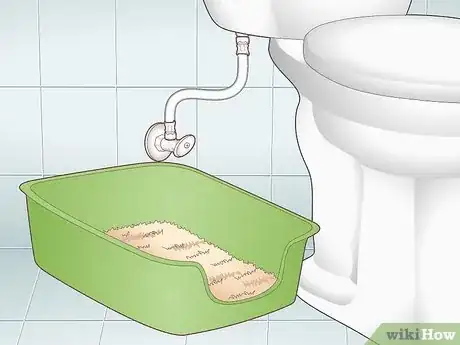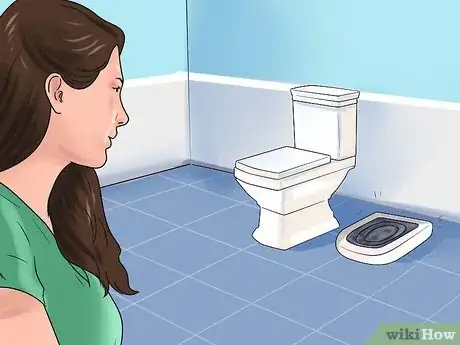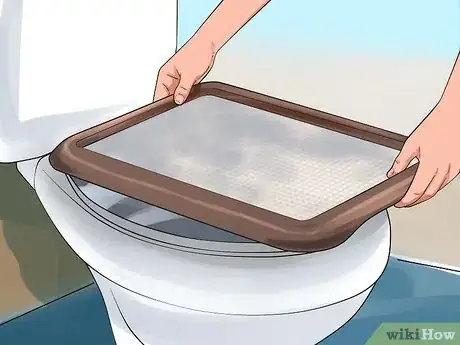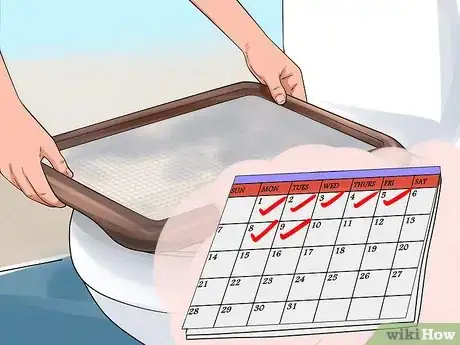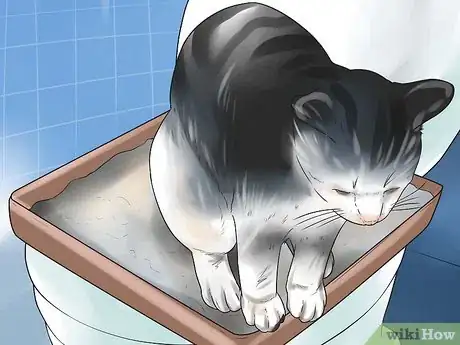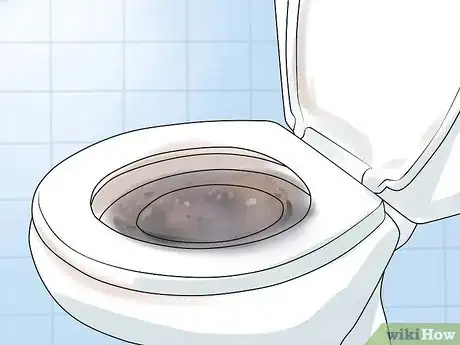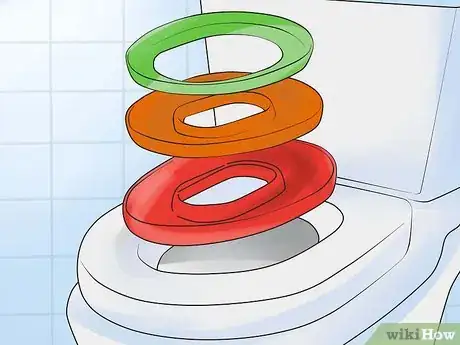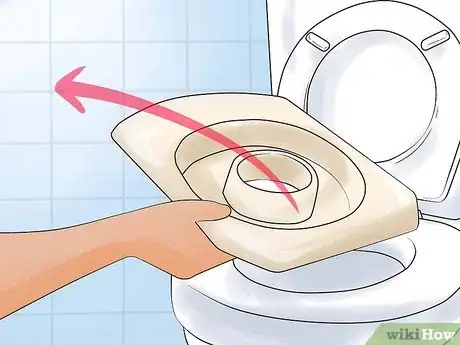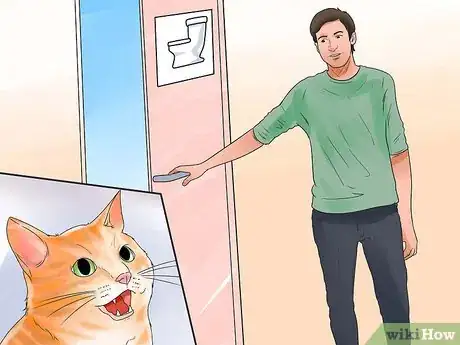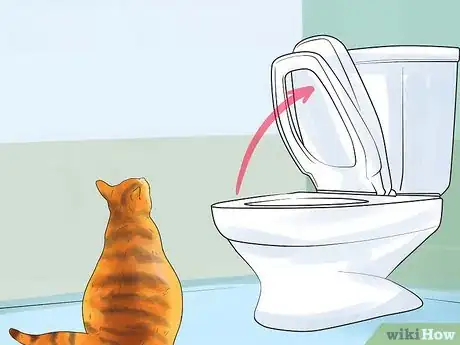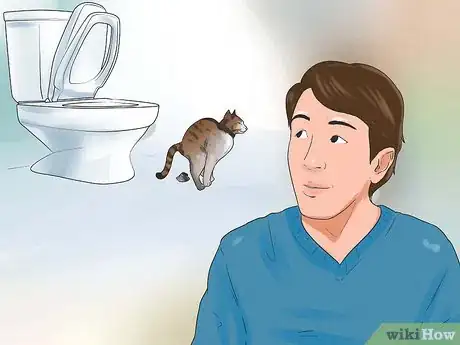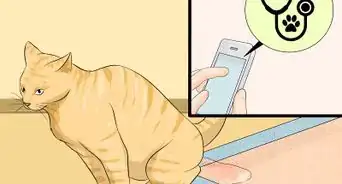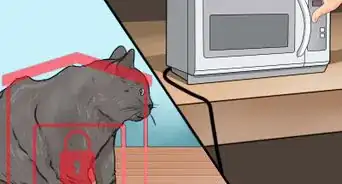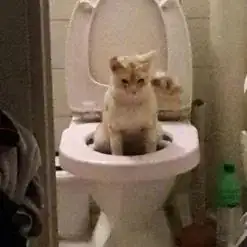This article was co-authored by Brian Bourquin, DVM. Brian Bourquin, better known as “Dr. B” to his clients, is a Veterinarian and the Owner of Boston Veterinary Clinic, a pet health care and veterinary clinic with three locations, South End/Bay Village, the Seaport, and Brookline, Massachusetts. Boston Veterinary Clinic specializes in primary veterinary care, including wellness and preventative care, sick and emergency care, soft-tissue surgery, dentistry. The clinic also provides specialty services in behavior, nutrition, and alternative pain management therapies using acupuncture, and therapeutic laser treatments. Boston Veterinary Clinic is an AAHA (American Animal Hospital Association) accredited hospital and Boston’s first Fear Free Certified Clinic. Brian has over 19 years of veterinary experience and earned his Doctor of Veterinary Medicine from Cornell University.
wikiHow marks an article as reader-approved once it receives enough positive feedback. This article received 17 testimonials and 100% of readers who voted found it helpful, earning it our reader-approved status.
This article has been viewed 1,144,153 times.
There are many benefits of teaching a cat to use the toilet. It eliminates smells caused by a litter box and creates less work for you. It takes time, education, and patience to litter train a cat. Follow the training process precisely and be prepared for potential setbacks.
Steps
Preparing for the Transition
-
1Prepare a designated bathroom for your cat. If you've decided to toilet train your cat, the first step in the process is creating a designated bathroom for the cat to eliminate. Choose the bathroom in your home that your cat has easiest access to. Move the cat's litter box into the bathroom and place it near the toilet.[1]
-
2Gather the supplies. You need a variety of supplies in order to toilet train your cat. Your cat will be transitioning from his regular litter box to a training seat and eventually to the toilet.
- A cat training seat is a small contraption placed over the toilet bowl. A small indent in the center of the device will be filled with flushable litter. As you progress in training, you begin by cutting bigger and bigger holes in the training seat until your cat gets used to urinating and defecating straight into the toilet rather than litter. You can purchase a training seat or make one on your own.[2]
- The City Kitty Cat Toilet Training Kit is one such training seat. The seat has four rings that can be removed to increase the size of the hole in its center. At the trainings completion you remove the tray altogether. CitiKitty is a simple device that is inexpensive. It generally sells for $30.[3]
- The Litter Kwitter is another brand of training seat. It has color coordinated training trays of increasing size. As your cat progresses in training, you will swap out a larger tray for a smaller one. Eventually, you'll be able to move the tray altogether and your cat will eliminate straight into the toilet. The Litter Kwitter is highly convenient but can be somewhat expensive. It generally sells for $40 to $50.[4]
- If you'd rather save money, you can create a training tray yourself. You will need duct tape, plastic liner or kitchen plastic wrap, and an aluminum roasting pan size 12 5/8" x 10 1/8" x 3".[5]
Advertisement -
3Understand how to create a training tray. If you opt to create your own training tray, the process is fairly simple. You should have know how to create a training tray before transitioning from the litter box to the toilet.
Beginning Training
-
1Raise the litter box in increments each week. In order to transition your cat from litter box to toilet, you'll need to raise the litter box up near the toilet seat. Eventually, your cat will learn to jump onto the toilet seat when he has to eliminate each week. Using stacks of newspaper, cardboard, or old magazines raise the litter box by 3 inches each day until it's on level with the toilet seat.[8]
-
2Place the litter box on top of the toilet seat. Once the litter box is on level with the toilet seat, place it on top of the toilet seat. Leave it there for a few days. This is about how long it will take your cat to get comfortable eliminating on the toilet.[9]
-
3Replace the litter box with a training seat filled with flushable litter. Once your cat is comfortably using the litter box without any accidents, it's time to use your training seat. Secure your training seat on the toilet.
- If you're using the Litter Kwitter or a similar product, use the smallest training pan. This training pan will have no hole in it and you'll simply fill it with flushable litter.[10]
- If you're using an aluminum tray, simply put the tray in place and fill it with flushable litter. Do not cut any holes in the tray yet.[11]
-
4Transition into eliminating in the toilet. Give your cat a few days to get used to eliminating in the training tray. Once he does so accident free, it's time to start making the transition.
- If you're using the Litter Kwitter or a similar product, gradually transition into bigger and bigger training seats. Training seats will have small holes in them that get larger as your cat moves through his training.
- If you're using an aluminum, use a screw driver to cut a hole in the bottom of the pan. Every day, make the hole slightly bigger.[12]
- Gradually decrease the amount of litter you're using as well. Each time your cat eliminates in the pan, replace the litter with a slightly smaller amount than before.[13]
-
5Remove the training seat. After about two weeks of increasing the size of the hole or training trays, you can remove the training seat completely. Your cat should now be comfortable eliminating straight into the toilet rather than a litter box.[14]
Taking Precautions
-
1Consider if toilet training is right for you and your cat. Toilet training is not for everyone. If you and your cat do not have the right mentality, you might be better off sticking to the litter box.
- If your cat is very young, less than six months old, or already has issues using a litter box, toilet training might not be the best option. Cats who are older and are already comfortable with their litter box are easiest to toilet train.[15]
- If your cat is skittish, he might struggle with litter box training. Shyer cats generally prefer to cover their feces and urine to protect themselves from potential predators.[16]
- Toilet training takes time, organization, and dedication. If you're not generally a well organized person or if you're very busy, you might be better off sticking with litter.[17]
-
2Familiarize yourself with the downsides to toilet training. Many vets advise against toilet training cats. Familiarize yourself with the criticisms of toilet training so you can make a well informed decision about whether it's right for you and your pet.
- First off, toilet training goes against a cat's natural instincts. Cats have a natural tendency to dig and bury when eliminating. Using the toilet, even after proper training, can cause stress for a cat. You do not want using the bathroom to be a stressful event as it can lead to behavioral and health issues for your cat.[18]
- The toilet lid must always be left open. If you or a house guest accidentally closes the toilet lid, your cat will eliminate elsewhere.[19]
- Older cats or cats with joint problems will have trouble reaching the toilet and maintaining balance on the rim. There is a risk for injury with toilet training, especially for senior cats.[20]
-
3Prepare for setbacks. Toilet training, even when done properly, frequently causes setbacks. If your cat is resistant to a step in the process, he might begin eliminating elsewhere. If this occurs, take a step back in toilet training and see if this helps. It's a good idea to have a lot of cleaning supplies on hand when toilet training. In all likelihood, there will be at least one accident along the way.[21]
Expert Q&A
Did you know you can get expert answers for this article?
Unlock expert answers by supporting wikiHow
-
QuestionCan cats really be trained to use the toilet?
 Brian Bourquin, DVMBrian Bourquin, better known as “Dr. B” to his clients, is a Veterinarian and the Owner of Boston Veterinary Clinic, a pet health care and veterinary clinic with three locations, South End/Bay Village, the Seaport, and Brookline, Massachusetts. Boston Veterinary Clinic specializes in primary veterinary care, including wellness and preventative care, sick and emergency care, soft-tissue surgery, dentistry. The clinic also provides specialty services in behavior, nutrition, and alternative pain management therapies using acupuncture, and therapeutic laser treatments. Boston Veterinary Clinic is an AAHA (American Animal Hospital Association) accredited hospital and Boston’s first Fear Free Certified Clinic. Brian has over 19 years of veterinary experience and earned his Doctor of Veterinary Medicine from Cornell University.
Brian Bourquin, DVMBrian Bourquin, better known as “Dr. B” to his clients, is a Veterinarian and the Owner of Boston Veterinary Clinic, a pet health care and veterinary clinic with three locations, South End/Bay Village, the Seaport, and Brookline, Massachusetts. Boston Veterinary Clinic specializes in primary veterinary care, including wellness and preventative care, sick and emergency care, soft-tissue surgery, dentistry. The clinic also provides specialty services in behavior, nutrition, and alternative pain management therapies using acupuncture, and therapeutic laser treatments. Boston Veterinary Clinic is an AAHA (American Animal Hospital Association) accredited hospital and Boston’s first Fear Free Certified Clinic. Brian has over 19 years of veterinary experience and earned his Doctor of Veterinary Medicine from Cornell University.
Veterinarian
-
QuestionHow long does it take to train a cat to use the toilet?
 Pippa Elliott, MRCVSDr. Elliott, BVMS, MRCVS is a veterinarian with over 30 years of experience in veterinary surgery and companion animal practice. She graduated from the University of Glasgow in 1987 with a degree in veterinary medicine and surgery. She has worked at the same animal clinic in her hometown for over 20 years.
Pippa Elliott, MRCVSDr. Elliott, BVMS, MRCVS is a veterinarian with over 30 years of experience in veterinary surgery and companion animal practice. She graduated from the University of Glasgow in 1987 with a degree in veterinary medicine and surgery. She has worked at the same animal clinic in her hometown for over 20 years.
Veterinarian
-
QuestionCan you leash train a cat?
 Pippa Elliott, MRCVSDr. Elliott, BVMS, MRCVS is a veterinarian with over 30 years of experience in veterinary surgery and companion animal practice. She graduated from the University of Glasgow in 1987 with a degree in veterinary medicine and surgery. She has worked at the same animal clinic in her hometown for over 20 years.
Pippa Elliott, MRCVSDr. Elliott, BVMS, MRCVS is a veterinarian with over 30 years of experience in veterinary surgery and companion animal practice. She graduated from the University of Glasgow in 1987 with a degree in veterinary medicine and surgery. She has worked at the same animal clinic in her hometown for over 20 years.
Veterinarian Yes, however, don't expect to go for purposeful walks, as with a dog. The leash is more a safety measure, to keep the cat secure while exploring. Get a comfortable harness and train the cat to be relaxed wearing it. Put it on for a short time and reward the cat with treats. Remove the harness and feed the cat. This helps the cat link the harness to pleasant things
Yes, however, don't expect to go for purposeful walks, as with a dog. The leash is more a safety measure, to keep the cat secure while exploring. Get a comfortable harness and train the cat to be relaxed wearing it. Put it on for a short time and reward the cat with treats. Remove the harness and feed the cat. This helps the cat link the harness to pleasant things
Warnings
- Never toilet train a kitten. A kitten could drown by falling into a toilet.⧼thumbs_response⧽
- Do not teach your cat to flush. Although it is possible, once they learn, many seem to enjoy it and will do it all the time, even when it's not appropriate to do so as no business has been done.⧼thumbs_response⧽
References
- ↑ http://www.prevention.com/health/healthy-living/how-toilet-train-your-cat
- ↑ http://www.prevention.com/health/healthy-living/how-toilet-train-your-cat
- ↑ https://www.washingtonpost.com/news/animalia/wp/2017/03/22/you-can-train-your-cat-to-use-the-toilet-just-dont-expect-it-to-flush/?utm_term=.a46408049143
- ↑ http://www.vetstreet.com/our-pet-experts/should-you-train-your-cat-to-use-the-toilet
- ↑ http://www.prevention.com/health/healthy-living/how-toilet-train-your-cat
- ↑ http://www.prevention.com/health/healthy-living/how-toilet-train-your-cat
- ↑ http://www.prevention.com/health/healthy-living/how-toilet-train-your-cat
- ↑ http://www.prevention.com/health/healthy-living/how-toilet-train-your-cat
- ↑ http://www.prevention.com/health/healthy-living/how-toilet-train-your-cat
- ↑ http://www.vetstreet.com/our-pet-experts/should-you-train-your-cat-to-use-the-toilet
- ↑ http://www.prevention.com/health/healthy-living/how-toilet-train-your-cat
- ↑ http://www.prevention.com/health/healthy-living/how-toilet-train-your-cat
- ↑ http://www.prevention.com/health/healthy-living/how-toilet-train-your-cat
- ↑ http://www.prevention.com/health/healthy-living/how-toilet-train-your-cat
- ↑ http://www.prevention.com/health/healthy-living/how-toilet-train-your-cat
- ↑ http://www.prevention.com/health/healthy-living/how-toilet-train-your-cat
- ↑ http://www.prevention.com/health/healthy-living/how-toilet-train-your-cat
- ↑ http://www.catbehaviorassociates.com/toilet-training/
- ↑ http://www.catbehaviorassociates.com/toilet-training/
- ↑ http://www.catbehaviorassociates.com/toilet-training/
- ↑ http://www.catbehaviorassociates.com/toilet-training/
- ↑ Brian Bourquin, DVM. Veterinarian. Expert Interview. 31 January 2020.
- ↑ Brian Bourquin, DVM. Veterinarian. Expert Interview. 31 January 2020.
About This Article
If you want to toilet train your cat, place your cat’s litter box near the toilet. Once a week, raise the litter box a few inches by placing stacks of newspaper or old magazines beneath it. When the litter box is level with the toilet seat, place the box on top of the seat and leave it there for a few days. Once your cat seems comfortable, secure a training seat onto the toilet and fill it with flushable litter. Give your cat a few days to get used to using the training tray, then gradually transition to bigger and bigger training seats, until the cat is successfully eliminating in the toilet. It should take about 2 weeks before you can remove the training seat entirely. Read on for tips from our veterinary reviewer on some of the downsides of toilet training a cat.
